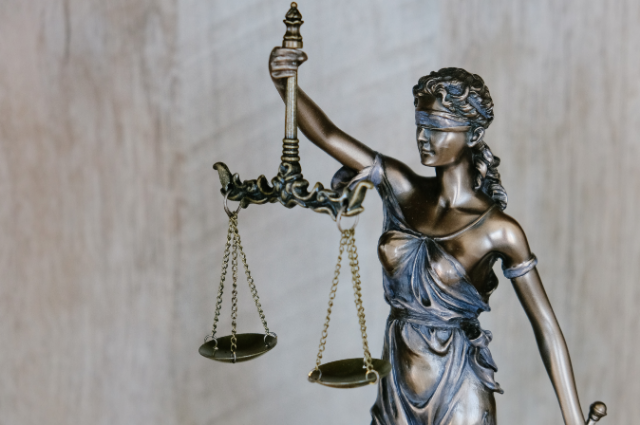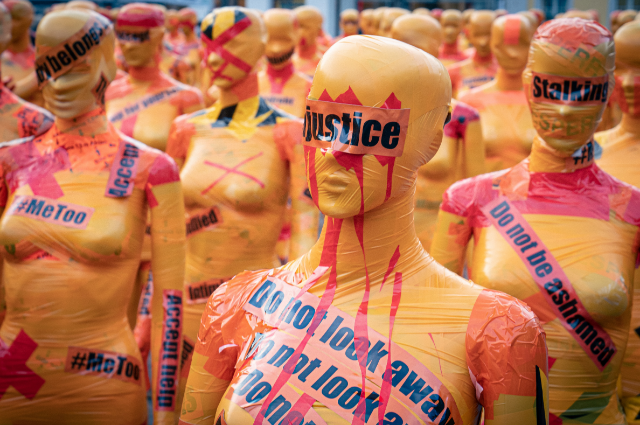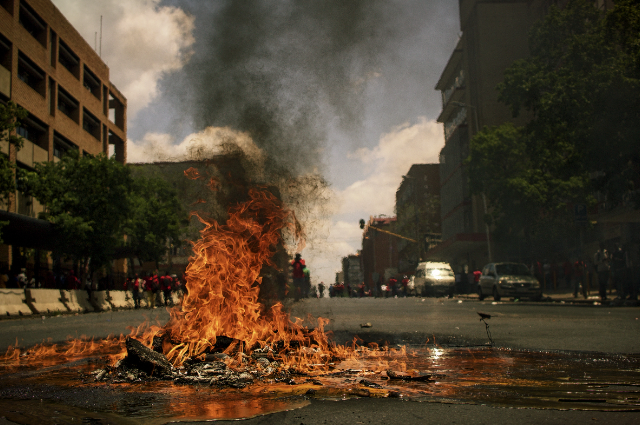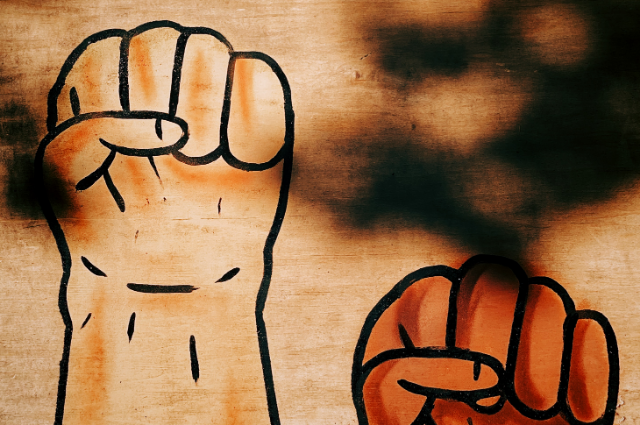
Image Source: Tingey Injury Law Firm on Unsplash
In the realm of political maneuvering, where power dynamics dance to the tunes of democracy, one instrument stands out as a test of true governance: the non-confidence vote. This political gambit, both subtle and forceful, has etched its mark across centuries, unraveling the hidden layers of leadership and accountability.
Unmasking the Non-Confidence Vote:
Imagine a chessboard of power, where leaders and legislators engage in a strategic match. At its core lies the non-confidence vote, an enigmatic move that questions the authority and efficacy of a ruling government. This potent tool goes beyond mere rhetoric, requiring tangible action to shake the foundations of power.
Non-confidence voting is an embodiment of democracy's heartbeat. It allows elected representatives to cast their verdict on the performance of the ruling regime. When cast, it is akin to a pebble tossed into a still pond, setting off ripples that can reshape the political landscape.
THE ANATOMY OF A NON-CONFIDENCE VOTE
The non-confidence vote, a symphony of democratic scrutiny, a litmus test for the vigor of governance, and a compelling performance that hinges on three pivotal components: proposing, debating, and casting the weighty votes,
1. Proposing: Unveiling the Veil
When the storm clouds of discontent gather over the political horizon, it's often a solitary figure who dares to hold the mirror up to the government's actions. This courageous actor emerges from the ranks of the opposition, wielding a non-confidence motion like a beacon of accountability. With a conviction as firm as the oak's roots, the opposition proclaims its lack of confidence in the government's direction. The motion, like a gauntlet thrown at the feet of those in power, sets the stage for the grand debate.
2. Debating: The Verbal Duel
As the halls of power reverberate with the thud of the motion hitting the parliamentary floor, the hushed anticipation builds to a crescendo. The debating chamber transforms into a rhetorical battleground where politicians don their sharpest arguments, aiming to cut through the political fog. Verbal volleys and strategic maneuvers are unleashed, each word a dagger of persuasion. The government, steadfast in its defense, counters every critique with a shield of justification. It's a verbal ballet of ideologies, a tug-of-war for public opinion, and a spectacle that lays bare the essence of the political divide.
3. Voting: The Verdict of Trust
As the dust settles and the echoes of impassioned speeches fade, the moment arrives: the voting. Here, the fate of the government hangs in the balance, suspended by the threads of democracy. Parliamentarians cast their votes, an embodiment of their convictions, their allegiances, and their assessment of the government's deeds. Each vote a verdict, each ballot a declaration. It's a ritual of immense gravitas, a democratic scale that determines whether the government's grip on power remains steadfast or crumbles.
REASON - FOR NON CONFIDENCE VOTE

In the complex arena of political theater, where power dynamics and governance intertwine, the thunderous echoes of a non-confidence vote resonate like a clarion call for change. Beneath the surface of the parliamentary mosaic lie a myriad of reasons, each a thread contributing to the intricate fabric of such decisive moments. Let us navigate this labyrinthine landscape and dissect the catalytic factors that can unfurl the banner of non-confidence, shaking the foundations of governance.
- Policy Disagreements:
In the heart of the political amphitheater, the clash of differing ideologies often ignites the spark that fans the flames of a non-confidence vote. A tango between the incumbent government's policies and the aspirations of the opposition can escalate to a crescendo, culminating in a motion that challenges the very essence of governance. Like an ideological tempest, these disagreements can swirl around critical matters such as economic strategies, social policies, or environmental commitments, casting shadows on the ruling party's legitimacy.
- Scandals:
Behind the grand curtain of political affairs lies a realm of secrets and intrigues, occasionally thrust into the limelight by a scandal of cataclysmic proportions. When allegations of wrongdoing, ethical transgressions, or personal missteps emerge, they have the power to corrode the public's trust in a government's ability to lead. A non-confidence vote becomes a stage where the drama of accountability plays out, as the nation watches with bated breath to see whether the ruling powers can weather the storm.
- Corruption:
In the corridors of power, the scent of corruption can seep like a corrosive force, gnawing at the foundation of governance. When the fabric of trust is marred by accusations of embezzlement, bribery, or abuse of authority, the non-confidence vote emerges as a reckoning for those who have transgressed the sacred oath of public service. Like a beacon of justice, this vote can signal the citizenry's refusal to be governed by those tainted by corrupt practices.
- Failure to Manage Critical Issues:
In the captain's chair of leadership, the inability to navigate through turbulent seas of crisis can lead to a political shipwreck. When governments falter in managing critical issues, be it a pandemic, an economic downturn, or a security threat, the whispers of discontent can evolve into a resounding cry for change. A non-confidence vote emerges as a litmus test, scrutinizing the ability of the current regime to steer the ship of state through treacherous waters.
As the tapestry of political narratives unfolds, it becomes evident that the reasons behind non-confidence votes are as diverse as the colors that adorn it. Policy disputes, scandals, corruption, and mismanagement form the warp and weft of this intricate fabric. With each thread representing a unique facet of governance, these votes stand as a testament to the power of democracy to question authority and hold leaders accountable. In the theater of politics, the script is never set in stone, and the rising crescendo of a non-confidence vote is a reminder that change is an ever-present specter, lurking just beyond the horizon.
MANIPUR: From Voices to A Vote

Photo by Pawel Janiak on Unsplash
The state of Manipur is grappling with the looming threat of violence and deep-seated distrust among its communities. Geographically divided between hill tribes, represented by the Kukis, and the plains inhabited by the Meitei, tensions persist in the buffer zone patrolled by the police. An internet blackout and restricted movement have stifled daily life for over two months. The region has witnessed violent incidents, including arson, civilian casualties, and raids on police armories, exacerbating the turmoil.
India's highest court acknowledged the breakdown of law and order, summoning Manipur's police director to address the situation. There are concerns that the unrest could extend to other northeastern states, given shared ethnic ties and the proximity to Myanmar. Amidst this chaos, India deployed a significant number of army personnel, potentially affecting its defense readiness against China along the disputed India-China border.
The opposition's no-confidence motion, although unlikely to succeed, serves as a tool to bring Prime Minister Modi to Parliament for accountability. The INDIA alliance, comprising 26 opposition parties, seeks Modi's response on the Manipur crisis, urging him to address the dire situation and replace Manipur's top elected official with federal control. However, government communication on the issue has been limited, sparking criticism.
Despite visits by Home Ministe Amit Shah and the opposition's efforts, a resolution remains elusive. The absence of strong leadership communication within the Parliament exacerbates the crisis. As Manipur's stability hangs in the balance, the tension between government indifference and public concern continues to grow.
THE OPPOSITION'S CRUCIAL ROLE - IN NON-CONFIDENCE MOTIONS

IMAGE SOURCE: by Artur Shamsutdinov on Unsplash
In the grand theater of politics, where power ebbs and flows like a current, the role of the opposition emerges as a sentinel of democracy. Like a vigilant guardian of the people's trust, the opposition dons the mantle of responsibility when it comes to proposing and supporting non-confidence motions, embodying a pivotal force that maintains the delicate equilibrium of power.
In the symphony of governance, the opposition's role is akin to the counterpoint, adding depth and perspective to the ruling melody. Proposing and supporting non-confidence motions, the opposition wields an instrument that resonates with the aspirations of the electorate. With the power to bring the government's actions under scrutiny, it stands as the antidote to complacency and a rallying call for accountability.
- Imagine the parliamentary arena as a battlefield of ideas, where the opposition charges forward with their arsenal of concerns, criticisms, and alternatives. The non-confidence motion becomes their flag, firmly planted in the ground, a declaration that their voices will not be drowned amidst the cacophony. Through eloquent debates and meticulous arguments, the opposition weaves a narrative that compels the government to answer the pressing questions of the hour.
Crucially, the opposition serves as the lighthouse that guides the ship of democracy away from treacherous shores. In its tireless pursuit of transparency and integrity, it stands as a reminder that power should never become an entity unto itself. By proposing non-confidence motions, the opposition holds the reins of authority to prevent the government from drifting towards the abyss of unchecked control.
The balance of power, much like a finely tuned instrument, requires constant calibration. Without the opposition's vigilant scrutiny, the government's actions might crescendo into a discordant symphony, failing to resonate with the needs and desires of the citizens. The non-confidence motion, in this context, acts as the harmonizing note that reverberates through the hallowed halls of governance, ensuring that no single faction becomes too dominant.
In the intricate dance of democracy, the opposition's role in non-confidence motions is more than mere political maneuvering—it's a commitment to the principles upon which nations are built. By engaging in this process, the opposition holds up a mirror to the government's actions, reflecting the hopes and concerns of the people they represent. It's a dance of accountability, where each move shapes the narrative of governance, illustrating that the power bestowed upon the elected is a sacred trust, not an entitlement.
As the quill of history continues to write the stories of nations, the role of the opposition in non-confidence motions remains an indelible chapter. A chapter that speaks of courage in the face of power, of a commitment to a higher purpose, and of an unyielding dedication to democracy's tenets. It is the chapter where the opposition shines as the guardian of equilibrium, a cornerstone of democratic resilience, and a reminder that in the tapestry of governance, every thread, no matter how divergent, weaves a narrative of collective progress.
ACCOUNTABILITY OF THE RULING GOVERNMENT
In the vast theater of politics, where power intertwines with responsibility, few acts are as defining as the non-confidence vote. With its spotlight on accountability and the pulse of public perception, this parliamentary maneuver serves as both a gauge and a guardian of governmental actions.*
In the intricate dance of democratic governance, accountability reigns supreme. The non-confidence vote, akin to a political magnifying glass, scrutinizes the government's actions and decisions with unyielding precision. It's a mechanism that compels those in power to answer to the very people who have entrusted them with it.
Imagine a courtroom where citizens sit as the judges of their elected representatives. Non-confidence votes, in this theatrical setting, present the crucial evidence in the form of governmental deeds, policies, and leadership. This democratic inquisition ensures that leaders remain steadfast in their commitment to serve, as any divergence invites the ominous specter of political expulsion.
Non-confidence votes don't merely assess the deeds of a government; they actively shape them. As the gears of democracy turn, the court of public opinion becomes the ultimate jury. Every policy, every stance, and every decision find themselves under public scrutiny. It's a symphony where the public's perception becomes the conductor's baton, guiding the course of governance.
The outcome of a non-confidence vote dances in the embrace of public sentiment. It's a profound synergy where the electorate's collective consciousness meets the political pulse. The government's performance, its promises kept or shattered, its transparency or lack thereof—all weigh heavily on the ultimate decision. Like a ship buffeted by the winds of popular sentiment, the government's future course may be redirected by the sway of public perception.
This connection between public perception and non-confidence votes is no mere coincidence. It's a testament to the symbiotic relationship that democracy nurtures. Governments, in their quest for continuity, strive to align their actions with the aspirations of their citizens. As the public measures these actions against their expectations, their sentiments crystallize into votes that could herald change or reaffirm the status quo.
Yet, it's not a simple binary equation. Public perception isn't solely defined by the government's deeds; it's also shaped by media, rhetoric, and the ever-changing tapestry of societal issues. A non-confidence vote, then, stands as a touchstone where the amalgamation of these influences is distilled into a single, consequential decision.
In the grand theater of politics, non-confidence votes are the moments of high drama—where the tension of accountability meets the suspense of public sentiment. Governments must navigate this intricate dance, ever mindful of the scrutiny their actions will face and the judgments those actions might incur. And as citizens, we watch this performance closely, recognizing that our perceptions have the power to weave the threads of destiny in the political fabric of our nation.
In the end, a non-confidence vote is more than a procedural exercise; it's a powerful reminder that the people are the ultimate custodians of governance. As they watch, evaluate, and cast their verdicts, governments are held accountable not just to the hallowed halls of parliament, but to the hearts and minds of the people they serve.

END NOTE...
In the intricate tapestry of democracy, non-confidence votes stand as a beacon of accountability, weaving together the threads of governmental deeds and public perception into a fabric of governance's destiny.
